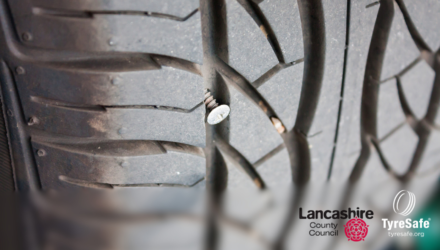With almost one in ten logistics businesses (9.8%) reporting HGV driver recruitment struggles1, Venson Automotive Solutions is urging companies operating vehicles over 3,500kg GVW to play their part in protecting a struggling sector. By ensuring driver qualifications, licences and training requirements are properly managed, Venson believes businesses can help bolster employment and career opportunities whilst stimulate interest from new recruits for the benefit of the logistics industry as a whole.
 Brexit has impacted driver recruitment from the EU, there is a backlog of driving tests caused by Covid-19 and self-employment tax reforms have led to EU drivers leaving the UK, all of which is exacerbating a long standing skills shortage conundrum.
Brexit has impacted driver recruitment from the EU, there is a backlog of driving tests caused by Covid-19 and self-employment tax reforms have led to EU drivers leaving the UK, all of which is exacerbating a long standing skills shortage conundrum.
Logistics UK, one of the UK’s leading business groups, is lobbying government to make driver training affordable, accessible and attractive for all, a move welcomed by Venson. However, the fleet management expert also calls for businesses to rally to protect and motivate existing HGV drivers. By closely monitoring which vehicles each of their existing drivers are licenced to drive and ensuring that they undergo training when needed to renew their qualifications, businesses and fleet managers can play their part in protecting the UK’s existing pool of skilled drivers.
Gil Kelly, Operations Director for Venson comments: “Managing drivers can be one of the most challenging aspects of an operator’s business. While ultimate responsibility lies with a driver to ensure they hold the correct licence for the vehicles they drive, every business retains a Duty of Care to validate this before a vehicle is assigned. Businesses should utilise an efficient system to keep on top of licence renewal dates and training requirements to ensure they and their drivers remain fully compliant with valid licences.”
Professional drivers of Heavy Good Vehicles (HGVs) and Light Commercial Vehicles (LCVs) weighing 3,500kg GVW and upwards are legally required to hold a Driver Certificate of Professional Competence (CPC) qualification. This is obtained, and renewed every five years, by completing 35 hours of training followed by competency exams. Drivers must always carry their certificate – sometimes called a ‘driver qualification card’ (DQC) – while driving professionally or they run the risk of facing a £50 fine. Driving without a valid Driver CPC qualification could lead to a £1,000 fine and invalidated insurance.
In addition, vehicles manufactured in the EU since May 2006 and being used for hire or reward that have a Gross Vehicle Weight (GVW) of over 3,500kg must have a tachograph fitted, to automatically log speed, distance and driver activity. Vans weighing 3,500kg but with a tow hitch fitted must also have a tachograph fitted, as the potential added weight of a trailer and its contents will add to the vehicle’s GVW.
Gil Kelly continued: ““There is a lot for fleet managers and the wider business to keep on top of. Consideration also needs to be given to what the vehicles and their drivers are required to do. For example, does the driver require training for heavy lifting, safe loading of the vehicle, or the use of ancillary equipment such as operating cranes or tail lifts? Any of these will require specific training, and the use of ancillary equipment may require a licence, which must be kept up to date.


















